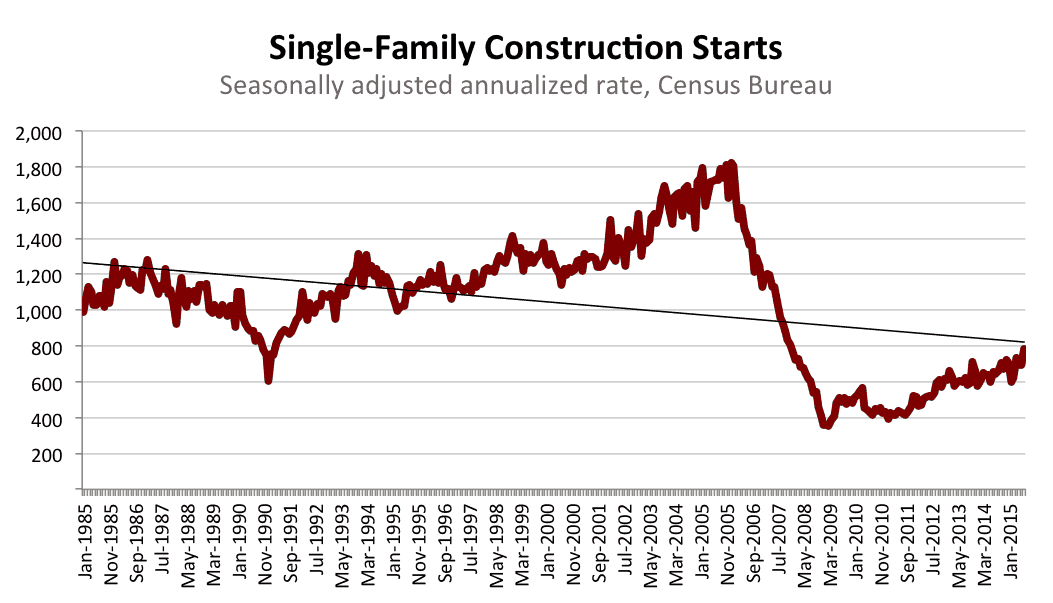Every month, the Census Bureau tells us how many homes are being built. Generally, economists like the number to go up, because more construction means more jobs, more consumer spending and more economic growth.
Sometimes, though, even a big increase in new home construction is disappointing. That happened in June, when housing starts jumped nearly 10 percent from a month earlier. It sounded good, but turned out to be a one-off blip caused by New York developers rushing to break ground before a tax credit was set to expire.
Today, Census data showed starts rose only 0.2 percent in July, to about 1.2 million groundbreakings a year. Even though the increase was small, it’s upbeat news because the growth was driven by single-family construction, which jumped 12.8 percent to a rate of 782,000 new houses a year. Multi-family starts fell more than 17 percent.
Good, right? Yes, but not great. The chart shows you why.

Despite the pickup in construction, we’re way behind where we should be. The population is growing and millennials, the country’s biggest cohort, are getting married and starting their own households. Rising demand and lagging supply in housing have been driving the big price increases we’ve been seeing in many markets. That’s one reason all those millennials are living at home, despite an improved job market.
“It’s important to look at this number in context,” Redfin Chief Economist Nela Richardson told Bloomberg. “It’s 40 percent below the peak. It’s not keeping up with the pace of demand.”
Homebuilders are optimistic, but their sunny outlook has yet to translate to that pickup in construction we need. The NAHB/Wells Fargo Housing Market Index, which tracks builder sentiment on sales and customer traffic, came in at 61 for August, its highest level since November 2005.
Until builders start breaking more ground, though, buyers shouldn’t expect much relief from rising prices.

More Construction: Good For the Housing Market, But Not Good Enough
- BỞI System Admin
- Ngày 23/11/2024

